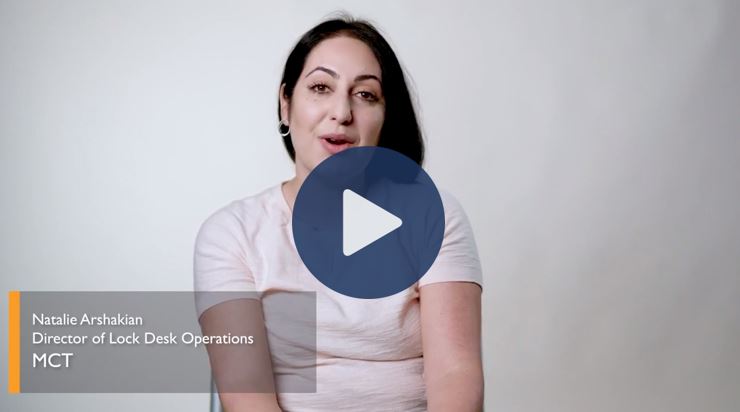 Expanding a lender’s pipeline to include long-term locks may allow them to access new sources of production and grow their business.
Expanding a lender’s pipeline to include long-term locks may allow them to access new sources of production and grow their business.
This whitepaper will address MCT’s approach to conceptualizing the different risks associated with long-term locks and then hedging the exposure by using TBA forward contracts and/or exchange-traded options.
There are several types of long-term lock programs offered by lenders; our focus will be on locked commitments for standard mortgage loans that expire more than 90 days in the future.
Read How to Successfully Hedge a Mortgage Pipeline of Long-Term Interest Rate Locks to explore the three components of successfully managing a program of long-term loan commitments: pricing to account for the economic value of the delayed funding, adjusting pull-through models to reflect financial and operational factors, and hedging locks efficiently to optimize profitability.
Long-Term Interest Rate Lock Hedging Strategies Explained
In this whitepaper, we will explain how MCT® utilizes several strategies to hedge mortgage pipelines of long-term locks, depending on market conditions and our clients’ preferences. These recommendations are designed to optimally offset interest rate exposure while minimizing ‘basis risk’ and hedging costs.
In our latest whitepaper, How to Successfully Hedge a Mortgage Pipeline of Long-Term Interest Rate Locks, we will begin with a thorough explanation of fallout, pull-through behavior, and analytics that will set the stage for how a pipeline of extended locks can be analyzed and managed. Later, we will explain the strategies that MCT employs to manage the interest rate risks associated with long-term locks.
Answer all your preliminary questions about long-term interest rate locks by reading this comprehensive whitepaper.
Download Whitepaper
“MCT utilizes several strategies to hedge pipelines of long-term locks, depending on market conditions and our clients’ preferences. These recommendations are designed to optimally offset interest rate exposure while minimizing “basis risk” and hedging costs.”
– Excerpt from How to Successfully Hedge a Mortgage Pipeline of Long-Term Interest Rate Locks
About The Author – Bill Berliner
As Director of Analytics, Bill Berliner is tasked with developing new products and services, enhancing existing solutions, and helping to expand MCT’s footprint as the preeminent industry-leader in secondary marketing capabilities for lenders. Mr. Berliner boasts more than 30 years of experience in a variety of areas within secondary marketing. He is a seasoned financial professional with extensive knowledge working with fixed income trading and structuring, research and analysis, risk management, and esoteric asset valuation.
Mr. Berliner has also written extensively on mortgages, MBS, and the capital markets. He is the co-author, with Frank Fabozzi and Anand Bhattacharya, of Mortgage-Backed Securities: Products, Structuring, and Analytical Techniques, which was named one of the top ten finance texts in 2007 by RiskBooks. He wrote and edited chapters for The Handbook of Mortgage-Backed Securities, The Handbook of Fixed-Income Securities, Securities Finance, and The Encyclopedia of Financial Models. In addition, Mr. Berliner co-authored papers published in The Journal of Structured Finance and American Securitization. He also wrote the monthly “In My View” column for Asset Securitization Report from 2008-2012.
Read How to Successfully Hedge Long-Term Interest Rate Locks
We hope that this whitepaper will give you the confidence as a professional to understand this valuable topic and perhaps to more confidently expand your pipeline to manage a program of long-term loan commitments.
By reviewing these complex concepts, you can look forward to increasing your understanding and ability to explain the long-term lock strategies that will impact your bottom line directly. Download, read, and learn more from our experts.
Download Whitepaper
Let us know what you think in the comments!
Related Articles
- Case Study: Eustis Mortgage Upgrades Loan Sales Process with MCT Marketplace
- Improve Your Margins with Mandatory Trading (Panel Recap)
- White-Label Rate Sheets & Mark to Market Reporting Services
- What the FINRA 4210 Mark to Market Rule Means for Lenders (VIDEO)
- Outsourcing Mortgage Operations (Webinar Recap)
- Intro to Hedging a MSR Portfolio | Servicing Insights Vol. 7
- Secondary Mortgage Marketing Glossary & Definitions



